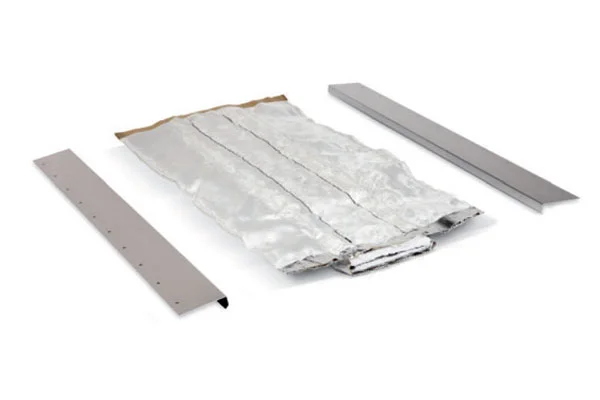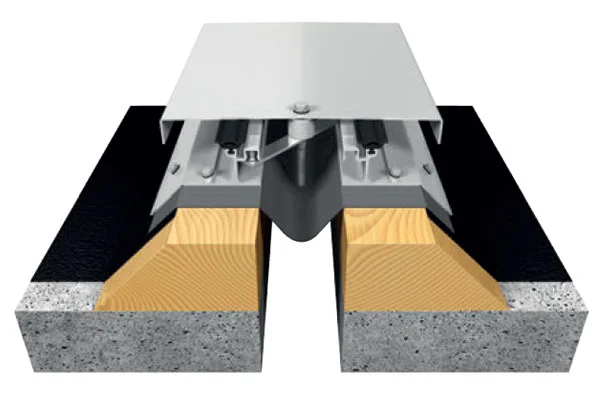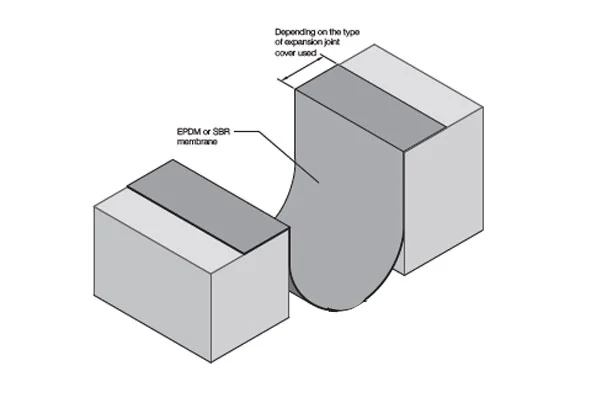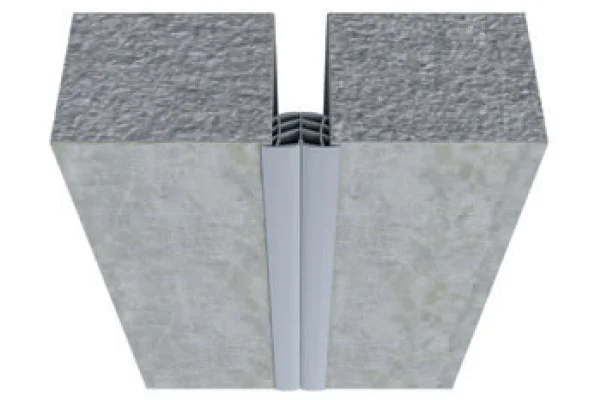If you’ve ever walked across your basement and noticed small cracks spreading across the concrete floor, you’re not alone. Basement floor cracks are among the most common problems homeowners face, especially in Maryland, Washington D.C., and Virginia, where changing weather patterns, clay-heavy soils, and seasonal humidity put foundations under constant stress.
While some cracks may seem harmless, others can be early warning signs of serious structural issues or water intrusion. Understanding why concrete cracks, how to tell which ones matter, and what professional solutions exist can make all the difference in protecting your home for the long term.
Why Basement Floors Crack
Concrete may look solid and immovable, but it’s actually a porous and reactive material that expands, contracts, and shifts in response to environmental conditions. Here are the most common causes of cracking beneath your feet:
1. Natural Shrinkage During Curing
When concrete is first poured, it contains a mix of cement, sand, aggregate, and water. As the water evaporates during the curing process, the slab naturally shrinks. If it dries too quickly or unevenly, tension builds up and results in small, surface-level cracks known as shrinkage cracks.
These are usually cosmetic and don’t indicate structural danger — but they can still allow moisture or radon gas to seep through over time if left unsealed.
 2. Soil Settlement and Movement
2. Soil Settlement and Movement
The Mid-Atlantic region is known for its expansive clay soils, which swell when wet and shrink when dry. This constant expansion and contraction can cause uneven pressure beneath your basement floor.
When part of the soil sinks or erodes (often due to poor compaction during construction or water intrusion), the concrete slab loses support, leading to cracks known as settlement cracks.
3. Hydrostatic Pressure
During heavy rainfall or melting snow, the soil surrounding your foundation becomes saturated. The water trapped underground creates hydrostatic pressure — a powerful force that pushes upward and sideways against your basement floor and walls.
This pressure can cause cracks that start small but widen over time, eventually allowing water to seep in and cause damp spots or even flooding.
4. Temperature Changes
Concrete expands when heated and contracts when cooled. Seasonal temperature fluctuations, particularly in Maryland and Virginia, create stress along the edges of the slab where movement is restricted. Over time, this thermal expansion and contraction can cause hairline or surface cracks to form.
5. Poor Construction Practices
Sometimes, the issue starts from the beginning. Inadequate soil preparation, improper concrete mixtures, or lack of control joints (intentional weak points to manage cracking) can cause early and severe cracking.
Older homes built before modern building standards are particularly vulnerable to these issues.
6. Moisture and Drainage Problems
If groundwater isn’t properly drained away from the home, excess moisture can accumulate beneath the slab. This constant presence of water softens the soil, creating instability and increasing hydrostatic pressure — both of which contribute to cracking and floor movement.
Types of Basement Floor Cracks and What They Mean
Not all cracks are created equal. Recognizing the different types can help you determine when to call the professionals.
1. Hairline Cracks
-
Appearance: Thin as a strand of hair, often shallow and isolated.
-
Cause: Normal curing or minor shrinkage.
-
Risk Level: Low, but seal them to prevent moisture intrusion.
2. Spiderweb or Map Cracks
-
Appearance: A network of tiny, interconnecting lines on the surface.
-
Cause: Rapid drying or surface shrinkage.
-
Risk Level: Usually cosmetic, but can worsen if moisture seeps in.
3. Vertical or Diagonal Cracks
-
Appearance: Single, continuous lines running across the floor.
-
Cause: Soil movement, settlement, or hydrostatic pressure.
-
Risk Level: Moderate to high may indicate foundation shifting.
4. Wide Cracks with Uneven Edges
-
Appearance: Visible gaps or displacement between slab sections.
-
Cause: Significant soil erosion or structural movement.
-
Risk Level: High. These require immediate professional inspection.
5. Cracks with Water Seepage or Stains
-
Appearance: Dark, damp, or actively leaking lines.
-
Cause: Hydrostatic pressure, poor drainage, or foundation cracks.
-
Risk Level: Severe may lead to flooding or mold growth.
The Hidden Dangers of Ignoring Cracked Basement Floors
Even small cracks can lead to big problems over time. Ignoring them allows water, humidity, and contaminants to enter your basement turning a minor cosmetic issue into a major repair.
1. Water Intrusion
Cracks in the floor are direct entry points for groundwater. Once water finds a path, it widens the crack and weakens the surrounding concrete. Persistent moisture leads to dampness, peeling paint, and in severe cases, standing water.
2. Mold and Mildew Growth
Moisture trapped beneath the floor or along cracks creates an ideal environment for mold. Mold spores can spread through the HVAC system, affecting indoor air quality and triggering respiratory issues.
3. Structural Damage
If cracks are caused by foundation movement or hydrostatic pressure, the problem won’t stop at the floor. The entire structure may begin to shift, causing wall cracks, uneven doors, and sagging floors above.
4. Radon Gas Infiltration
The Mid-Atlantic region is known for elevated radon levels a naturally occurring gas that seeps through cracks in concrete. Long-term exposure can increase health risks, making proper sealing and ventilation essential.
Professional Diagnosis: Finding the True Cause
At AquaGuard Waterproofing, identifying the root cause of basement floor cracks is the first step before any repairs begin. Our trained specialists use advanced diagnostic tools to locate both visible and hidden problems:
-
Moisture Detection Tools: Measure humidity and moisture levels beneath the slab.
-
Crack Mapping: Track the size, direction, and movement of cracks over time.
-
Soil Analysis: Determine if poor compaction or expansive clay is contributing to foundation movement.
-
Hydrostatic Pressure Testing: Identify areas where water pressure is building around or under the foundation.
By diagnosing the underlying issue, AquaGuard ensures that repairs aren’t just cosmetic; they’re permanent solutions.
How Professionals Fix Basement Floor Cracks
Depending on the cause and severity, AquaGuard Waterproofing offers several proven repair methods:
1. Epoxy or Polyurethane Crack Injection
For small to moderate cracks, technicians inject specialized materials that fill and seal the gap completely.
This method restores the slab’s integrity and stops water from seeping through.
2. Under-Slab Drainage Systems
If the cracks are caused by hydrostatic pressure or groundwater buildup, installing an interior drainage system beneath the floor is the most effective fix.
These systems collect and redirect water to a sump pump, relieving pressure and keeping the basement permanently dry.
3. Sump Pump Installation
A reliable sump pump system is crucial in Maryland’s wet seasons. It automatically removes groundwater before it reaches the surface, preventing cracks from reopening or expanding.
4. Foundation Stabilization
If cracking is linked to soil movement or settling, structural reinforcement may be necessary. AquaGuard uses proven techniques such as helical piers or carbon fiber straps to stabilize the foundation and prevent further shifting.
5. Floor Replacement and Moisture Barriers
In severe cases, damaged concrete sections may need to be replaced. During this process, professionals install vapor barriers or waterproof membranes below the new slab to prevent future moisture infiltration.
Preventing Future Basement Floor Cracks
Once your basement is repaired, prevention is the key to keeping it protected for years to come. Here are the top strategies professionals recommend:
-
Maintain Proper Drainage: Keep gutters clean and ensure downspouts discharge at least six feet from the foundation.
-
Control Humidity: Use dehumidifiers or a professional ventilation system like EZ Breathe to keep air dry.
-
Monitor Cracks Regularly: Even repaired cracks should be inspected annually for changes.
-
Seal Your Basement: Consider interior or exterior waterproofing coatings to block moisture movement.
-
Grade the Soil Correctly: Ensure the ground slopes away from your home to reduce hydrostatic pressure.
Why Professional Repair Matters
While DIY crack fillers are available at hardware stores, they rarely last especially in climates like Maryland’s, where temperature and humidity fluctuate dramatically. These products may temporarily seal the surface but fail to address the underlying structural or drainage problems.
Professional repairs from AquaGuard Waterproofing ensure that:
-
Cracks are correctly diagnosed before sealing.
-
Structural reinforcement is added where needed.
-
Moisture sources are identified and permanently eliminated.
-
All work is backed by long-term warranties.
With decades of experience serving the Mid-Atlantic region, AquaGuard understands the local soil composition, climate, and foundation types giving homeowners confidence that their repairs will hold up against even the toughest conditions.
The Long-Term Benefits of Professional Basement Floor Repair
When done right, basement floor crack repair offers lasting advantages:
-
Stronger Structural Integrity: Prevents uneven settling and foundation movement.
-
Improved Waterproofing: Keeps groundwater out and humidity under control.
-
Healthier Air Quality: Stops mold growth and radon infiltration.
-
Peace of Mind: No more worrying every time it rains.
-
Enhanced Property Value: A dry, stable basement increases your home’s resale potential.
Conclusion
A cracked basement floor might seem like a small issue, but it’s often a symptom of a much larger problem beneath your home. Whether it’s soil movement, water pressure, or poor drainage, every crack tells a story and ignoring it can lead to costly consequences.
That’s where AquaGuard Waterproofing comes in. With decades of experience protecting homes across Maryland, Washington D.C., and Virginia, our team provides expert inspection, repair, and waterproofing solutions designed to last.
If you’ve noticed cracks forming in your basement floor, don’t wait for them to spread. Contact AquaGuard Waterproofing today for a professional evaluation and discover the concrete truth about keeping your basement strong, dry, and protected for good.









